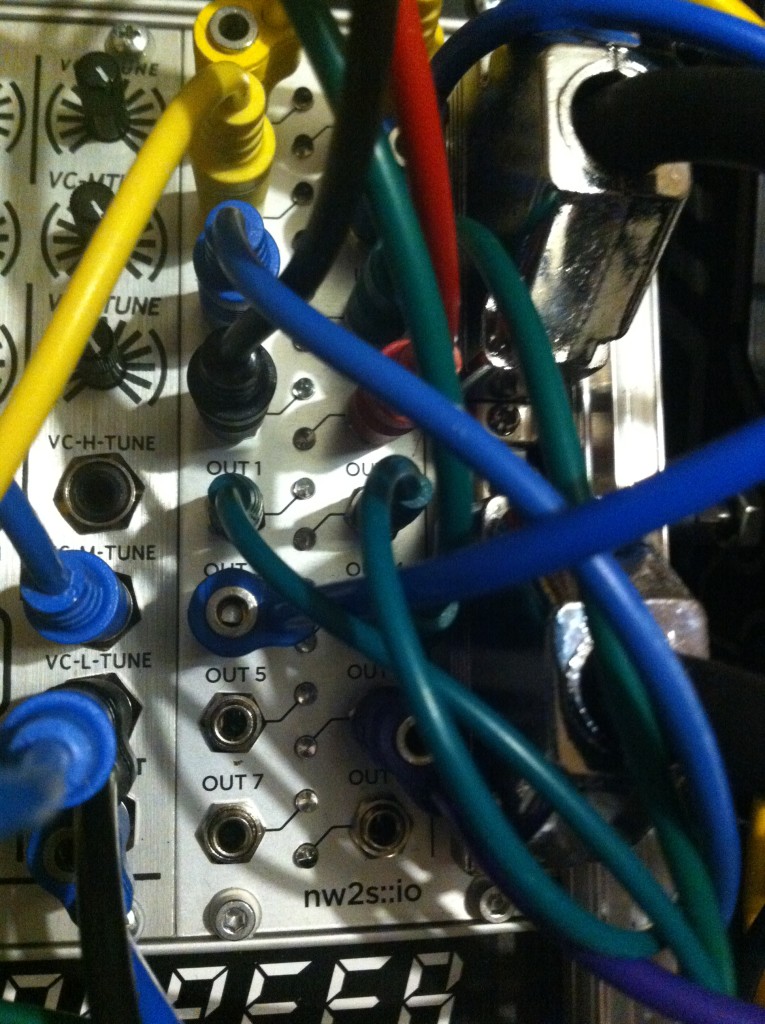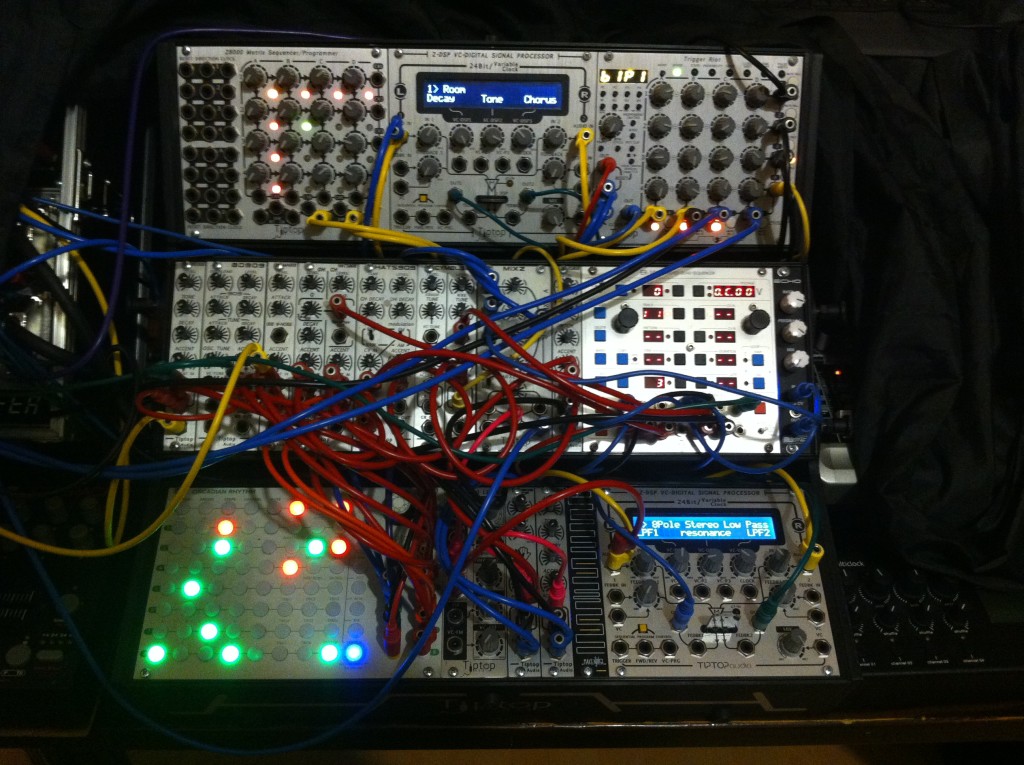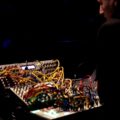Modular synthesis insight and news from Berlin
Konstantin Gervis
www.zv-k.bandcamp.com
Based in Berlin, Konstantin Gervis is a techno artist: part of the burgeoning underground scene that is currently defining a new path and approach to shaping sound. Together with Jessica Kert, he performs in full modular fashion as www.zv-k.com
With so much going on in the city and this fledging scene evolving at light speed, there seems to have been little to no time for reflection, or coverage given over to this ever evolving movement. With this in mind, Konstantin has very kindly agreed to be an intermediary and provide us all with insight (as he sees it) – straight from the source.
Here’s what he has to stay in his first dispatch:
The history of electronic music instruments is a fascinating journey
It reminds me of a driver missing the turn on a roundabout and having to go the full circle again. So, here we are (again) in the best times for electronic music, and it’s just about to get even better! I have never enjoyed playing with electronic (modular) instruments as much as I do now. They’ve become relatively small, immediate, with no presets (ok, some modules do, but there are no full recall/patch memories), the timing is as tight as it will ever be – meet Eurorack.
Established in 1995 by Dieter Doepfer, this modular format has grown into something that no one could have expected. With tens of manufacturers, hundreds of different modules – all sharing the same power connections and rack mounting standards (with the exception of www.analogsystems.co.uk). A word of warning: do your research before you buy! This is not an easy task, but purchasing my first case and modules was the purchasing decision I have ever made, so it is well worth it.
In my opinion, playing with modular is the closest thing to playing acoustic instruments and that is why it is so fun. It is very fast to operate and all the connections, no matter how complex, are always in front of you, so as a performer things are very easy to trace. However, that’s not to say there aren’t certain difficulties in accessing the front panel controls, but there are ways around that too: like here in my main performance case.
 It is not fully patched and the modules placement isn’t finalized (I need to move a couple of things around to get better access), but whatever the layout it is always the same, familiar and very tactile. The interface gives me possibilities in a way that no other electronic instrument (modular or not) can provide, and give such great sounding results. And, the best part is that all systems end up being different. Even when the same setup is used by different people, the music that comes out is always different. But don’t forget that the most important part of playing a modular system is the need to practice, yes, the long forgotten art of practicing your instrument, just like ANY acoustic instrument. There is no instant gratification, you simply have to practice to be able to actually play the thing.
It is not fully patched and the modules placement isn’t finalized (I need to move a couple of things around to get better access), but whatever the layout it is always the same, familiar and very tactile. The interface gives me possibilities in a way that no other electronic instrument (modular or not) can provide, and give such great sounding results. And, the best part is that all systems end up being different. Even when the same setup is used by different people, the music that comes out is always different. But don’t forget that the most important part of playing a modular system is the need to practice, yes, the long forgotten art of practicing your instrument, just like ANY acoustic instrument. There is no instant gratification, you simply have to practice to be able to actually play the thing.
No more copy-paste, preset browsing
You are as good as YOU are – and not somebody else. Your music is actually YOUR music and not a remix of someone else’s material. From my perspective, it is simply one of the best things that could actually happen to music, the individuality of the musician-composer-sound artist is coming through. No more room for someone to hide behind the laptop! Of course, there are a lot of great non-modular hardware electronic instruments, but the modular opens up so many new possibilities in rhythm and structure, that it is impossible for anything else to come even close.
In this monthly column, I will tell you about modules that I find essential and/or very interesting. I won’t go all scientific and technical about it or only when absolutely necessary. It’s going to be written purely from a live techno point of view as that is what I play, deeply love and care about.
So, now you have it. At least, where I’m coming from…
The very end of the signal chain
Some principals for you to think about: If you’ve ever attended a modular workshop, you always start from the ‘beginning’ – the oscillators. I, on the other hand, always start at the very end of the signal chain – the output module. Yes, that very boring module that does absolutely nothing, but converts your modular level signals to a line level that your pro audio gear can accommodate.
You see, the problem is that the modular level is 10 Volts and the pro audio line level is 3.472 Volts peak-to-peak. You can’t attenuate before output as it will give you a huge noise floor and no, you can’t lower the gain on the mixer to a minimum as you will still be slamming the mixer’s headroom. So, it is not just useful but essential if you want your expensive instrument to sound it’s best.
Personally, I went with 2x nw2s::io that together gives 16 outputs from the system and 16 inputs into it.
For my set up, we use all 16 outs and just 5 inputs for sending signals from aux sends to the modular FX processors. For a smaller system, or if you tend to mix in the system, there is a very good transformer based Vermona module TAI-4 and it’s cheaper and smaller (without the inputs and transformers) brother TwinOut.
Do yourself a favour and get your sound right!
P.S. Next month, we will explore the subject of mixing…





